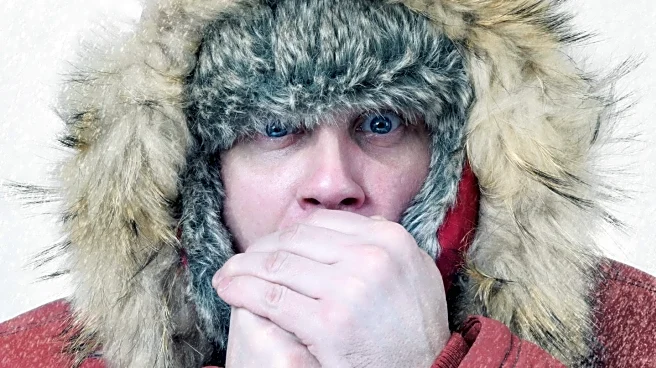What's Happening?
Hypothermia occurs when the body loses heat faster than it can produce it, leading to a drop in body temperature below 95°F. It can be life-threatening if left untreated. The Mayo Clinic outlines first
aid steps for hypothermia, including moving the person out of the cold, removing wet clothing, and applying warm compresses to the neck, chest, and groin. Symptoms of hypothermia include shivering, slurred speech, slow breathing, and confusion.
Why It's Important?
Providing effective first aid for hypothermia is crucial in preventing severe health outcomes and fatalities. Understanding the symptoms and treatment steps can help individuals respond quickly and appropriately in emergency situations. The Mayo Clinic's guidelines offer practical advice for managing hypothermia, emphasizing the importance of gradual rewarming and avoiding alcohol and tobacco products. Public awareness and education about hypothermia can improve response times and outcomes for affected individuals.
What's Next?
Efforts to educate the public and healthcare providers about hypothermia prevention and treatment are ongoing, aiming to reduce the incidence and improve outcomes for affected individuals. Research into advanced rewarming techniques and treatment options continues to evolve, offering hope for improved survival rates and outcomes for hypothermic patients. Collaborative efforts between healthcare providers, social services, and policymakers are essential to create comprehensive solutions that reduce the incidence of hypothermia and improve public health.
Beyond the Headlines
The societal impact of hypothermia-related deaths underscores the importance of addressing underlying social issues, such as homelessness and substance abuse. Ethical considerations in the treatment and management of hypothermic patients highlight the need for compassionate and equitable care. The development of advanced rewarming techniques and post-resuscitation care bundles could enhance survival rates and neurological outcomes for hypothermic patients.











